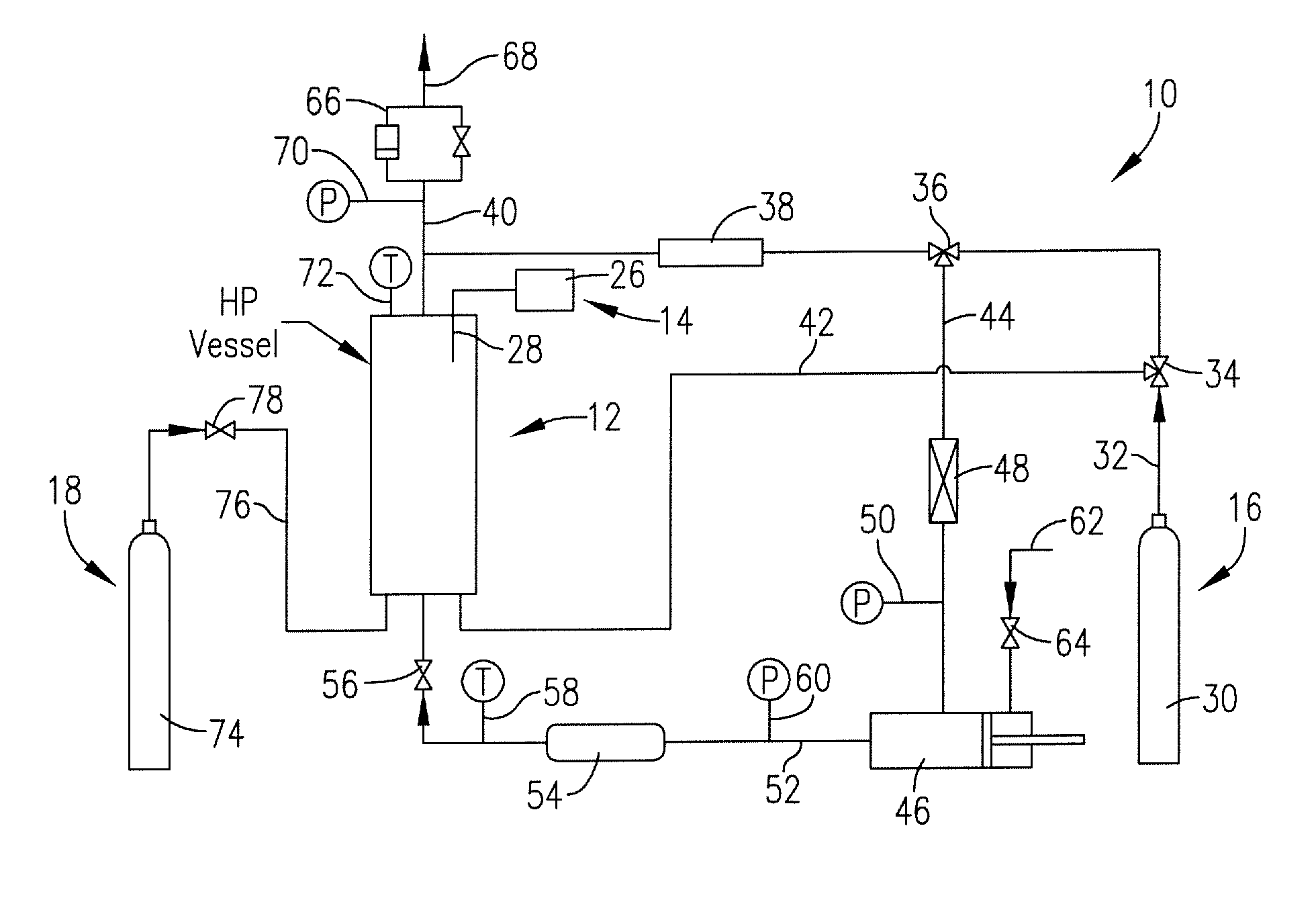Method for precipitation of small medicament particles into use containers
a technology of use containers and medicament particles, which is applied in the directions of granulation using vibration, powder delivery, medical preparations, etc., can solve the problems of limited commercial potential of specific single vial techniques described in the '891 patent, and the inability to effectively use the process on a commercial scal
- Summary
- Abstract
- Description
- Claims
- Application Information
AI Technical Summary
Benefits of technology
Problems solved by technology
Method used
Image
Examples
example 1
First Lyophobic Precipitation Experiment Using Sonicator
[0030]Drug solutions of varying concentrations in ethanol were prepared according to the table below.
[0031]
ConcentrationContainerDrugmg / mL, ethanolDrug Amount, mg1Acetaminophen50992Acetaminophen901793Acetaminophen30614Ibuprofen50105
[0032]2 mL of each test solution were transferred into a container. The containers were transferred to the platform inside the chamber. The chamber was then pressurized to 1200 psi using CO2, and the chamber was heated to about 62-66° C. to establish supercritical conditions. The ultrasonic transducer was then powered to about 15-70% power for about 38 minutes, during which time the drug was observed to precipitate. The power was maintained at about 50% for an additional 52 minutes to remove residual ethanol from the drug. The results are shown below.
[0033]
Weight loss,ContainerDrugEvaporation time, minwt %1Acetaminophen385.12Acetaminophen382.23Acetaminophen306.64IbuprofenN / AN / A
[0034]From this experim...
example 2
Second Lyophobic Precipitation Experiment Using Sonicator
[0035]Drug solutions of varying concentrations in ethanol, or hexafluoro-2-proponal (HFIP), were prepared according to the table below.
[0036]
ConcentrationAmountContainerDrugmg / mL, ethanolDrug mg / mL solvent1Acetaminophen104104 / 1 2Acetaminophen100 58 / 0.583Hydrocortisone12.525 / 24Acetaminophen68 17 / 0.255Phenytoin13.627 / 26Insulin29 (in HFIP) 9 / 0.3
[0037]Varying amounts of each drug solution according to the table above were transferred to designated containers. The containers were then placed on the platform in the chamber. The chamber was pressurized to 1,200 psi using CO2, and the chamber was heated to about 50° C. to establish supercritical conditions. The ultrasonic transducer was powered to about 15-40% power for about 60 minutes during which time the drug was observed to precipitate and the solvent evaporated into the CO2. The power was maintained at about 40-50% for an additional 90 minutes to remove residual solvent from ...
example 3
Third Lyophobic Experiment Using Sonicator
[0040]Drug solutions of varying concentrations in ethanol or HFIP were prepared according to the table below.
[0041]
ConcentrationAmountContainerDrugmg / mL, ethanolDrug mg / mL solvent1Acetaminophen100 27 / 0.272Phenytoin 1413 / 0.93Insulin34 (in HFIP)17 / 0.5
[0042]Varying amounts of each drug solution according to the table above were transferred to designated containers. The containers were transferred onto the platform in the chamber. The chamber was pressurized to 1,200 psi using CO2, and the vessel was heated to about 50° C. to establish supercritical conditions. The ultrasonic generator was programmed to be on for 1 second, off for 2 seconds, and the power supply was incrementally increased until the drug was fully precipitated, and the solvent evaporated. The power supply was at 15% for about 10 minutes, increased to 20% for about 65 minutes, increased to 24% for about 35 minutes, increased to 28% for about 40 minutes and finally increased to 30...
PUM
| Property | Measurement | Unit |
|---|---|---|
| diameter | aaaaa | aaaaa |
| diameter | aaaaa | aaaaa |
| temperature | aaaaa | aaaaa |
Abstract
Description
Claims
Application Information
 Login to View More
Login to View More - R&D
- Intellectual Property
- Life Sciences
- Materials
- Tech Scout
- Unparalleled Data Quality
- Higher Quality Content
- 60% Fewer Hallucinations
Browse by: Latest US Patents, China's latest patents, Technical Efficacy Thesaurus, Application Domain, Technology Topic, Popular Technical Reports.
© 2025 PatSnap. All rights reserved.Legal|Privacy policy|Modern Slavery Act Transparency Statement|Sitemap|About US| Contact US: help@patsnap.com


